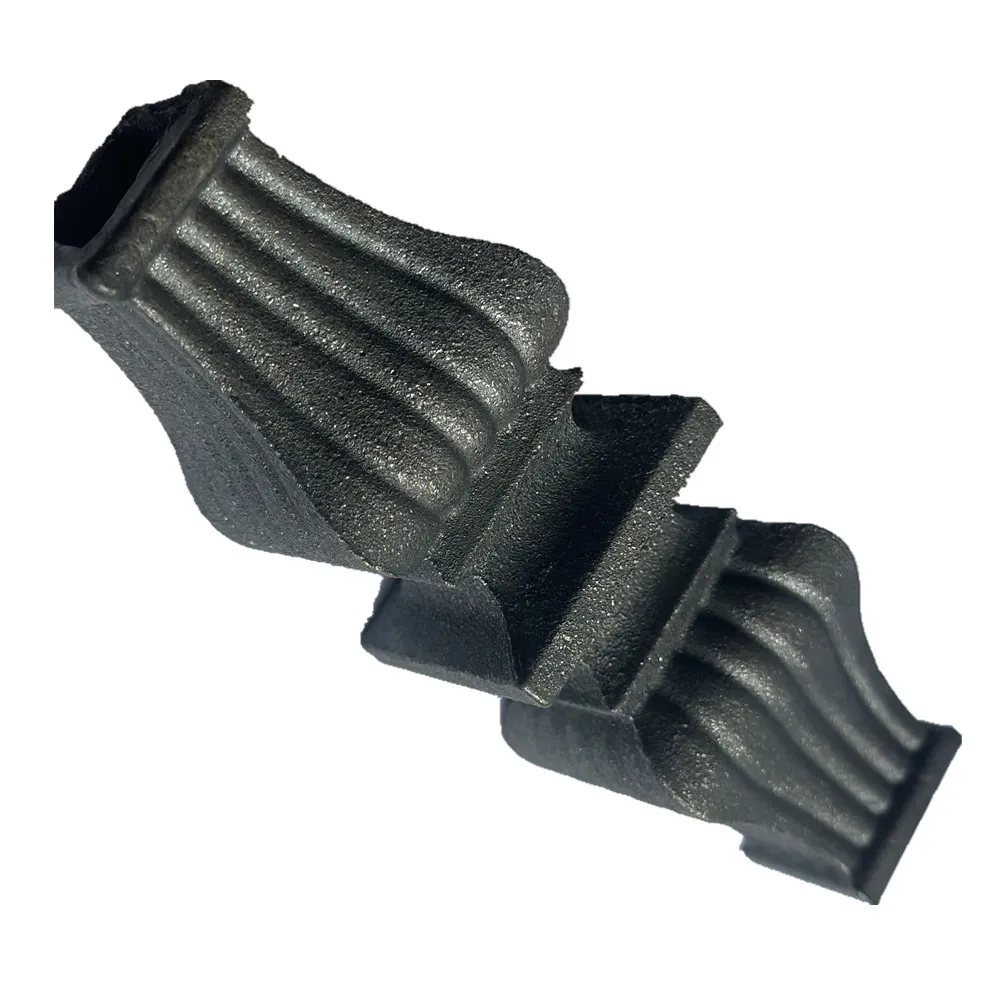cast iron casting
Understanding Cast Iron Casting An Overview
Cast iron casting is a vital manufacturing process that has been widely used throughout history due to its versatility, durability, and ability to be molded into intricate shapes. This traditional method of metalworking has evolved over the years and remains crucial in various industries, from automotive to cookware. In this article, we will explore the fundamentals of cast iron casting, its types, advantages, and applications.
What is Cast Iron?
Cast iron is an iron-carbon alloy with a carbon content higher than 2%. Its unique composition imparts exceptional properties, making it suitable for various applications. The primary forms of cast iron include gray iron, ductile (or nodular) iron, white iron, and malleable iron, each offering specific characteristics and benefits.
1. Gray Iron This is the most common type of cast iron, characterized by its excellent machinability and wear resistance. The graphite flakes in the microstructure provide good thermal conductivity and damping properties, making it ideal for engine blocks and machine bases.
2. Ductile Iron Also known as nodular iron, ductile iron can withstand higher stresses than gray iron. The spherical graphite structure enhances its strength and ductility, making it suitable for applications such as gears, pipes, and agricultural machinery.
3. White Iron This type of cast iron is hard and brittle, making it less common for structural applications. However, its high wear resistance makes it useful for making components like liners and grinding balls.
4. Malleable Iron Created through the heat treatment of white iron, malleable iron has improved ductility and can be easily shaped. It is often used in the production of automotive parts and pipe fittings.
The Casting Process
The casting process involves several key steps
1. Pattern Making A pattern, typically made of wood, metal, or plastic, is created to form the mold cavity. The pattern must be slightly larger than the final product to account for shrinkage during cooling.
2. Mold Preparation Molds can be made from sand, metal, or other materials. Sand molds are commonly used due to their cost-effectiveness and ability to produce complex shapes. The mold is formed around the pattern and then removed to create a cavity.
cast iron casting

3. Melting and Pouring The cast iron is melted in a furnace at temperatures exceeding 1200°C (about 2192°F). Once molten, it is poured into the prepared mold, where it will cool and solidify.
4. Cooling The cooling process is critical, as it affects the mechanical properties of the cast iron. Slow cooling promotes the formation of desired microstructures, while rapid cooling can lead to hard, brittle components.
5. Finishing Once the cast iron has cooled and solidified, it is removed from the mold and undergoes finishing processes, such as machining, grinding, or surface coating, to achieve precise dimensions and surface quality.
Advantages of Cast Iron Casting
Cast iron casting boasts numerous advantages
- Versatility The ability to create complex shapes makes it ideal for various industries. - Durability Cast iron components are known for their strength and wear resistance, leading to longer service life. - Cost-Effectiveness The materials and processes used in cast iron casting are often cheaper than alternatives, particularly for large production runs. - Good Foundry Properties Cast iron has excellent fluidity, allowing it to fill intricate molds effectively.
Applications of Cast Iron Casting
Thanks to its unique properties, cast iron casting finds applications in numerous sectors
- Automotive Engine blocks, cylinder heads, and brake components. - Construction Pipes, fittings, and structural supports. - Cookware Skillets, pans, and Dutch ovens are often made of cast iron due to its excellent heat retention and distribution. - Machinery Base plates, housings, and components for various industrial machines.
Conclusion
Cast iron casting is a time-honored manufacturing technique that continues to thrive in modern industry. Its ability to produce durable, complex shapes at a relatively low cost ensures that it remains a popular choice for many applications. As technology advances, the casting processes and materials continue to improve, maintaining the relevance of cast iron casting in an ever-evolving manufacturing landscape.
-
Wrought Iron Components: Timeless Elegance and Structural StrengthNewsJul.28,2025
-
Window Hardware Essentials: Rollers, Handles, and Locking SolutionsNewsJul.28,2025
-
Small Agricultural Processing Machines: Corn Threshers, Cassava Chippers, Grain Peelers & Chaff CuttersNewsJul.28,2025
-
Sliding Rollers: Smooth, Silent, and Built to LastNewsJul.28,2025
-
Cast Iron Stoves: Timeless Heating with Modern EfficiencyNewsJul.28,2025
-
Cast Iron Pipe and Fitting: Durable, Fire-Resistant Solutions for Plumbing and DrainageNewsJul.28,2025
-
 Wrought Iron Components: Timeless Elegance and Structural StrengthJul-28-2025Wrought Iron Components: Timeless Elegance and Structural Strength
Wrought Iron Components: Timeless Elegance and Structural StrengthJul-28-2025Wrought Iron Components: Timeless Elegance and Structural Strength -
 Window Hardware Essentials: Rollers, Handles, and Locking SolutionsJul-28-2025Window Hardware Essentials: Rollers, Handles, and Locking Solutions
Window Hardware Essentials: Rollers, Handles, and Locking SolutionsJul-28-2025Window Hardware Essentials: Rollers, Handles, and Locking Solutions -
 Small Agricultural Processing Machines: Corn Threshers, Cassava Chippers, Grain Peelers & Chaff CuttersJul-28-2025Small Agricultural Processing Machines: Corn Threshers, Cassava Chippers, Grain Peelers & Chaff Cutters
Small Agricultural Processing Machines: Corn Threshers, Cassava Chippers, Grain Peelers & Chaff CuttersJul-28-2025Small Agricultural Processing Machines: Corn Threshers, Cassava Chippers, Grain Peelers & Chaff Cutters












